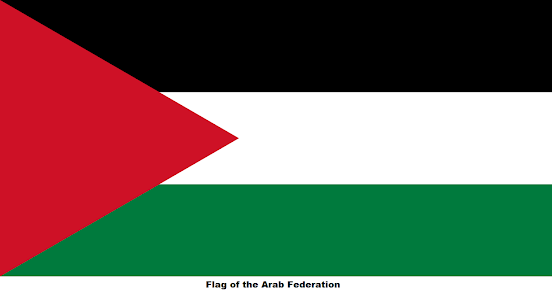Arab nationalism and pan-Arabism developed as significant movements in the Middle East following the collapse of the Ottoman Empire. Pan-Arabists promoted Arab Union that would unite all Arabs in one state, although Arab nationalism was popular among academics and the military. However, it was uncertain who would rule such a state, and significant rifts developed between contenders for the position. Other Arab nationalists viewed the Hashemite monarchy of Jordan as being unduly subservient to Western interests, despite the fact that they believed themselves to be the actual leaders of the Arab world. The Western Bloc maintained close relations with Jordan and Iraq, but Kurds and Shia Muslims viewed pan-arabism with distrust. The president of Egypt, Gamal Abdel Nasser, emerged as the Hashemites most significant competitor for power in the 1950s. He was supported by the Free Officers Movement and advocated for a republican, secular government with elements of Arab socialism. In addition to being at odds with the Hashemites, the House of Saud controlled Saudi Arabia with a zealous Wahhabi religion. All of this was intertwined with the Cold war of the time, during which governments sought assistance from the Western or Eastern Blocs, or both. The conflict that followed is sometimes referred to as the Arab Cold War.
Prior attempts to bring Jordan and Iraq together in the name of Arab unity failed owing to a number of factors. There were several reasons for this, including Jordan's lack of strategic and economic importance, King Abdullah's conciliation with Israel on the Arab-Israeli conflict, the sizable Palestinian population in Jordan, and the tumultuous relationship between Abdullah and his nephew, the Iraqi regent 'Abd al-Ilah. After Abdullah's murder, attempts for unification were undertaken in 1946 and 1947, as well as in 1951 and 1952, but they finally failed. Instead, Hussein took over in 1952 after Abdullah's son Talal.
In order to guarantee access to Middle Eastern petroleum resources and stop Soviet expansion southward, Iraq signed up to the Baghdad Pact in 1955. Through the agreement, Iraq joined forces with nations that supported the West, including Pahlavi Iran, Pakistan and Turkey. While Egyption President Nasser criticized the deal as a concession to imperialist treachery, Prime Minister Nuri al-Said viewed it as a security guarantee for both Iraq and the Hashemite kingdom.
As an opposition to Nasser's pan-Arabism, which had joined Syria and Egypt as the United Arab Republic (UAR), Iraq and Jordan established the Arab Union in 1958. The Arab Union sought to harmonize its foreign and defense policies while retaining domestic programmes under national control in order to placate Arab nationalists in Jordan and Iraq. Iraq and Jordan were the initial members of the union, which made the Arab Revolt banner its official flag in the hopes that Kuwait would follow. In order to become the Premier of the Arab Union, Nuri al-Said resigned as Prime Minister of Iraq, but he was unable to foresee the rising hostility to the rule within the Sunni officer corps.
The UAR and the Arab Federation mobilized troops in response to the UAR's army moves, which caused tensions between the two countries to rise in the summer of 1958. Inspired by Nasser's successful toppling of the Egyptian monarchy in 1952, a group known as the Free Officers prepared to destroy the monarchy in Iraq. Abd al-Karim Qasim's army entered Baghdad in July 1958 while en route to the Jordanian-Syrian border. Qasim then used this chance to lead they 14 July Revolution, which brought down the Hashemite government and the transient Arab Federation. The execution of King Hussein's ruling cousins in Iraq and the murder of the Jordanian prime minister Ibrahim Hashem during the revolution had direct effects on the Hashemites in Jordan. The US promised to "support the throne of Hashemites in Jordan" and provide and annual subsidy of $40-$50 million to replace the British subsidy after King Hussein of Jordan requested assistance from both the Britishers and Americans. The British sent 4000 soldiers who remained in Jordan until November 2, 1958.
The Hashemite dynasty's overthrow in Iraq and the ensuing revolution would not spell the end of relations between Jordan and Iraq. The Hashemites death had been ordered by Iraqi coup plotters, but they were subsequently toppled and slain in the 1960s, which may have facilitated peace. Jordan abandoned its long-standing trade ties with Syria in 1975 and began to focus on Iraq. Jordan was given access to Iraq's robust economy, oil revenue, sizable market, and strategic depth. Jordan saw some financial success thanks to Iraq. Iraq was the biggest market for Jordan in 1990, and it also held out the prospect of significant rebuilding projects following the Iran-Iraqi war.
Arab Federation Flag Image - Source <Orange Tuesday, Public domain, via Wikimedia Commons>











Learn "Decode DSA with C++" with PW Skills
ReplyDeletehttps://pwskills.com/course/Decode-DSA-with-C++?campaign=affiliate&coupon_code=GVTWFWHL